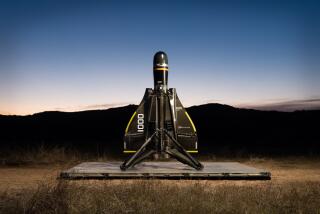Nissan to bring back Datsun car brand in selected markets
- Share via
Nissan Motor Co.is bringing back the storied Datsun brand, but American drivers are unlikely to see any new vehicles adorned with the name whose popularity in Southern California served as a springboard to international prominence.
Nissan is positioning Datsun as a lower-cost brand in emerging markets. The new line will go on sale in India, Indonesia and Russia in 2014.
The Datsun brand dates from 1931 as the nameplate of Japan’s DAT Motorcar Co., which was purchased by Nissan in 1933. The car was first known as a Datson, and later changed to Datsun.
The marque grew to a success by featuring well engineered, sporty cars such as the 240Z and Datsun 510 sedan in the United States.
Much of that growth is attributed to Yutaka Katayama, the auto marketing guru who spearheaded Nissan’s launch into the American car market.
Katayama, who is 102, worked in a variety of marketing jobs before being exiled by senior management in 1960 to what looked like a dead-end position in the United States because of his opposition to a company-backed union.
At the time Nissan had sold barely 1,000 vehicles in the United States under the Datsun brand name through independent distributors. Katayama, known as a savvy marketer and enthusiastic gearhead, turned the company into a household name.
The Japanese executive started with an ad budget of just $1,000, one engineer and an office clerk, wrote author David Halberstam, who chronicled Katayama’s story in “The Reckoning,” his 1986 book on the auto industry.
The first Datsun office was in an old Mobil oil building in downtown Los Angeles. Katayama later moved it to Gardena, where there was a large Japanese American population that he believed might be more accepting than other consumers of products from their ancestral country. It turned out that they liked the American cars of the time better.
Katayama was among the first Japanese auto executives to understand that foreign cars had to be customized for the American market. He understood that the initial Datsuns were underpowered and unrefined and nagged the home office for improvements such as bigger engines, better fit and finish and improved brakes.
His badgering paid off in 1968, when the new Datsun 510 models arrived at the Port of Los Angeles. The 510 was a small, durable four-door sedan that performed well and sold for a price -- about $1,800 -- that was within nearly everyone’s reach. Automotive buffs compared the car favorably to the BMW 1600, a German-made sedan that sold for about $5,000 at the time. The 510 powered Datsun to a sales boom, especially in import-friendly California.
U.S. growth turned Nissan into an international automotive powerhouse. In 1981, Nissan decided to phase out the Datsun name. The company wanted to sell all its cars under the same name, no matter the market. But that strategy lasted only a few years until Nissan launched its Infiniti luxury division in 1989.
Now it makes sense to establish a third brand to sell in developing markets, said Aaron Bragman, an analyst with IHS Automotive.
“What this does is safeguard the Nissan and Infiniti brands,” Bragman said.
The new Datsuns will be small, inexpensive cars without the power and amenities of Nissan’s other brands. To sell such vehicles under the Nissan name could hurt the reputation of the parent brand, he said.
General Motors Co. has taken the same approach in China to protect its Chevrolet and Buick nameplates by partnering with Liuzhou Wuling Motors Co. to sell vehicles under Baojun brand name that can compete with the small, inexpensive cars sold for the mass market there, Bragman said.
He doesn’t expect American consumers to pine for a new Datsun, except perhaps for a few diehard 240Z fans in Southern California.
“The name has been gone so long it doesn’t carry any huge nostalgia,” he said.
RELATED:
New Consumer Reports auto ratings
Automakers unveil three-cylinder engines
Designer models help Fiat 500 gain momentum
More to Read
Inside the business of entertainment
The Wide Shot brings you news, analysis and insights on everything from streaming wars to production — and what it all means for the future.
You may occasionally receive promotional content from the Los Angeles Times.









